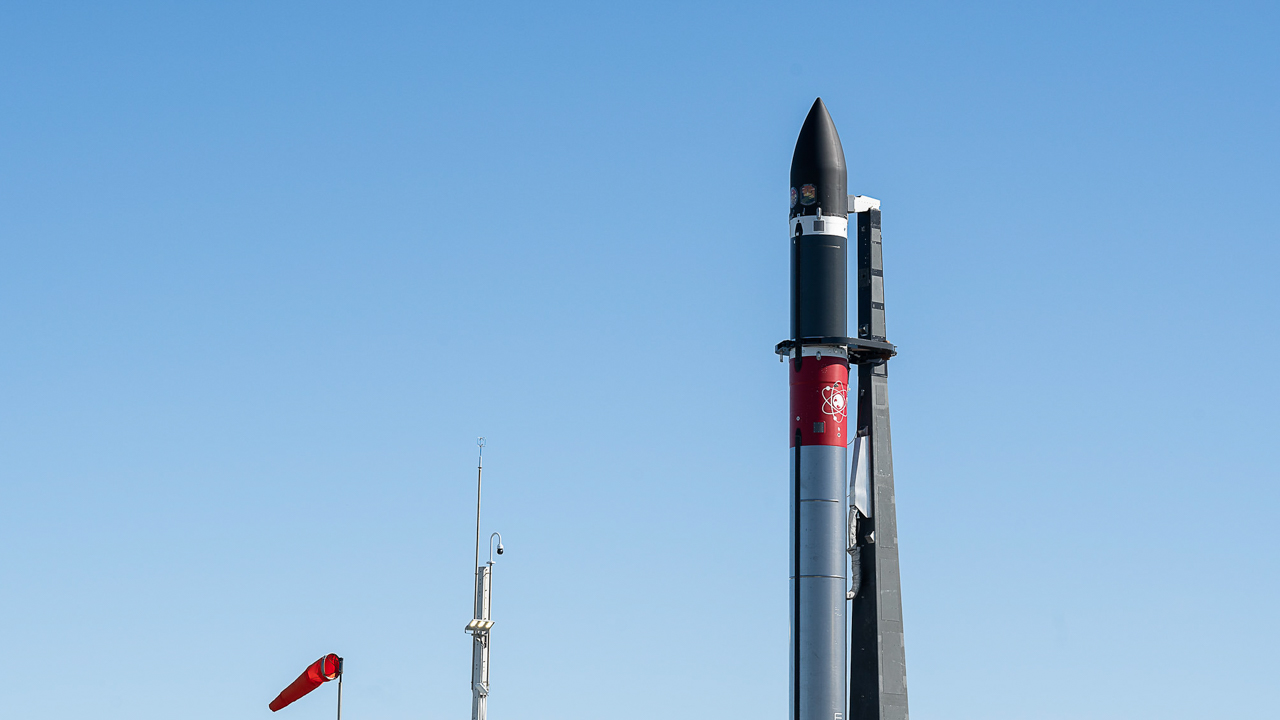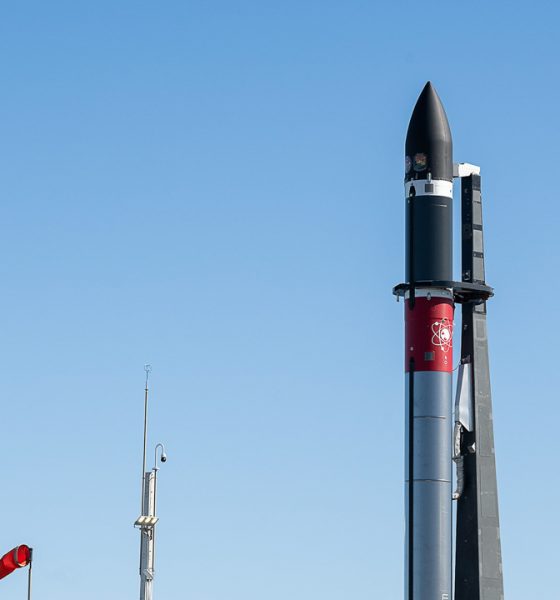

News
Rocket Lab announces next launch, will attempt first stage recovery
Rocket Lab is expected to launch seven satellites from Launch Complex 1 on the Mahia Peninsula in New Zealand. This will be the 39th overall mission and the seventh of the year.
Following up on their most recent launch, the debut of HASTE, Rocket Lab announced they will launch the “Baby Come Back” mission no earlier than July 14th.
The countdown to our next Electron launch from LC-1 is on – mark your calendars for July 14 UTC! ?️
In the meantime, we’re working a parallel launch campaign for the mission *after* this, with launch rehearsals now underway for our ?40th? Electron mission. pic.twitter.com/jtszMSf4Bo
— Rocket Lab (@RocketLab) June 29, 2023
NASA will fly four CubeSats dubbed the Starling mission and will test technologies for future multiple spacecraft missions. This small swarm of satellites will test in-space communications, navigation, and maneuvers between the spacecraft. Proving out this technology will allow NASA to apply these capabilities to future swarm satellite constellations on future missions.
Spire has two 3U CubeSats on board which will carry Global Navigation Satellite System Radio Occultation (GNSS-RO) payloads. These two satellites will be used to replenish the fully deployed constellation of more than 100 multipurpose satellites. The satellites provide global weather intelligence that is used to improve the accuracy of forecasts. Spire is the largest producer of GNSS-RO data.
The final satellite payload on this mission is the Telesat LEO 3 demonstration satellite. Built by Space Flight Laboratory. the LEO 3 satellite will replace the decommissioned LEO 1 satellite and allow Telesat to continue its test campaign of the Telesat Lightspeed constellation.
Rocket Lab will also attempt to recover the first stage of the mission, hence the name “Baby Come Back.” This will be the 2nd recovery attempt of the year after previously successfully recovering the first stage during their 35th mission, “The Beat Goes On.”
Back-to-back launch campaigns are underway at LC-1 as we prepare for our 39th and 40th Electron missions. #BabyComeBack #WhatShouldWeCallNumber40 pic.twitter.com/oYAdOjTxnO
— Rocket Lab (@RocketLab) July 3, 2023
Following stage separation, the Electron first stage will use Reaction Control Thrusters to orient itself as it travels back through the dense atmosphere. Unlike the Falcon 9, the Electron does not perform an entry burn or landing burn. Instead, the RCS thrusters make sure the first stage is positioned to best handle the heating and pressures applied and then, at the correct altitude, will deploy a parachute before an eventual soft touchdown in the ocean, where it will be recovered by ship.
Disclosure: Richard Angle is not an RKLB shareholder.
Questions or comments? Shoot me an email at rangle@teslarati.com, or Tweet me @RDAnglePhoto.

News
Tesla FSD fleet is nearing 7 billion total miles, including 2.5 billion city miles
As can be seen on Tesla’s official FSD webpage, vehicles equipped with the system have now navigated over 6.99 billion miles.

Tesla’s Full Self-Driving (Supervised) fleet is closing in on almost 7 billion total miles driven, as per data posted by the company on its official FSD webpage.
These figures hint at the massive scale of data fueling Tesla’s rapid FSD improvements, which have been quite notable as of late.
FSD mileage milestones
As can be seen on Tesla’s official FSD webpage, vehicles equipped with the system have now navigated over 6.99 billion miles. Tesla owner and avid FSD tester Whole Mars Catalog also shared a screenshot indicating that from the nearly 7 billion miles traveled by the FSD fleet, more than 2.5 billion miles were driven inside cities.
City miles are particularly valuable for complex urban scenarios like unprotected turns, pedestrian interactions, and traffic lights. This is also the difference-maker for FSD, as only complex solutions, such as Waymo’s self-driving taxis, operate similarly on inner-city streets. And even then, incidents such as the San Francisco blackouts have proven challenging for sensor-rich vehicles like Waymos.
Tesla’s data edge
Tesla has a number of advantages in the autonomous vehicle sector, one of which is the size of its fleet and the number of vehicles training FSD on real-world roads. Tesla’s nearly 7 billion FSD miles then allow the company to roll out updates that make its vehicles behave like they are being driven by experienced drivers, even if they are operating on their own.
So notable are Tesla’s improvements to FSD that NVIDIA Director of Robotics Jim Fan, after experiencing FSD v14, noted that the system is the first AI that passes what he described as a “Physical Turing Test.”
“Despite knowing exactly how robot learning works, I still find it magical watching the steering wheel turn by itself. First it feels surreal, next it becomes routine. Then, like the smartphone, taking it away actively hurts. This is how humanity gets rewired and glued to god-like technologies,” Fan wrote in a post on X.
News
Tesla starts showing how FSD will change lives in Europe
Local officials tested the system on narrow country roads and were impressed by FSD’s smooth, human-like driving, with some calling the service a game-changer for everyday life in areas that are far from urban centers.

Tesla has launched Europe’s first public shuttle service using Full Self-Driving (Supervised) in the rural Eifelkreis Bitburg-Prüm region of Germany, demonstrating how the technology can restore independence and mobility for people who struggle with limited transport options.
Local officials tested the system on narrow country roads and were impressed by FSD’s smooth, human-like driving, with some calling the service a game-changer for everyday life in areas that are far from urban centers.
Officials see real impact on rural residents
Arzfeld Mayor Johannes Kuhl and District Administrator Andreas Kruppert personally tested the Tesla shuttle service. This allowed them to see just how well FSD navigated winding lanes and rural roads confidently. Kruppert said, “Autonomous driving sounds like science fiction to many, but we simply see here that it works totally well in rural regions too.” Kuhl, for his part, also noted that FSD “feels like a very experienced driver.”
The pilot complements the area’s “Citizen Bus” program, which provides on-demand rides for elderly residents who can no longer drive themselves. Tesla Europe shared a video of a demonstration of the service, highlighting how FSD gives people their freedom back, even in places where public transport is not as prevalent.
What the Ministry for Economic Affairs and Transport says
Rhineland-Palatinate’s Minister Daniela Schmitt supported the project, praising the collaboration that made this “first of its kind in Europe” possible. As per the ministry, the rural rollout for the service shows FSD’s potential beyond major cities, and it delivers tangible benefits like grocery runs, doctor visits, and social connections for isolated residents.
“Reliable and flexible mobility is especially vital in rural areas. With the launch of a shuttle service using self-driving vehicles (FSD supervised) by Tesla in the Eifelkreis Bitburg-Prüm, an innovative pilot project is now getting underway that complements local community bus services. It is the first project of its kind in Europe.
“The result is a real gain for rural mobility: greater accessibility, more flexibility and tangible benefits for everyday life. A strong signal for innovation, cooperation and future-oriented mobility beyond urban centers,” the ministry wrote in a LinkedIn post.
News
Tesla China quietly posts Robotaxi-related job listing
Tesla China is currently seeking a Low Voltage Electrical Engineer to work on circuit board design for the company’s autonomous vehicles.

Tesla has posted a new job listing in Shanghai explicitly tied to its Robotaxi program, fueling speculation that the company is preparing to launch its dedicated autonomous ride-hailing service in China.
As noted in the listing, Tesla China is currently seeking a Low Voltage Electrical Engineer to work on circuit board design for the company’s autonomous vehicles.
Robotaxi-specific role
The listing, which was shared on social media platform X by industry watcher @tslaming, suggested that Tesla China is looking to fill the role urgently. The job listing itself specifically mentions that the person hired for the role will be working on the Low Voltage Hardware team, which would design the circuit boards that would serve as the nervous system of the Robotaxi.
Key tasks for the role, as indicated in the job listing, include collaboration with PCB layout, firmware, mechanical, program management, and validation teams, among other responsibilities. The role is based in Shanghai.
China Robotaxi launch
China represents a massive potential market for robotaxis, with its dense urban centers and supportive policies in select cities. Tesla has limited permission to roll out FSD in the country, though despite this, its vehicles have been hailed as among the best in the market when it comes to autonomous features. So far, at least, it appears that China supports Tesla’s FSD and Robotaxi rollout.
This was hinted at in November, when Tesla brought the Cybercab to the 8th China International Import Expo (CIIE) in Shanghai, marking the first time that the autonomous two-seater was brought to the Asia-Pacific region. The vehicle, despite not having a release date in China, received a significant amount of interest among the event’s attendees.








